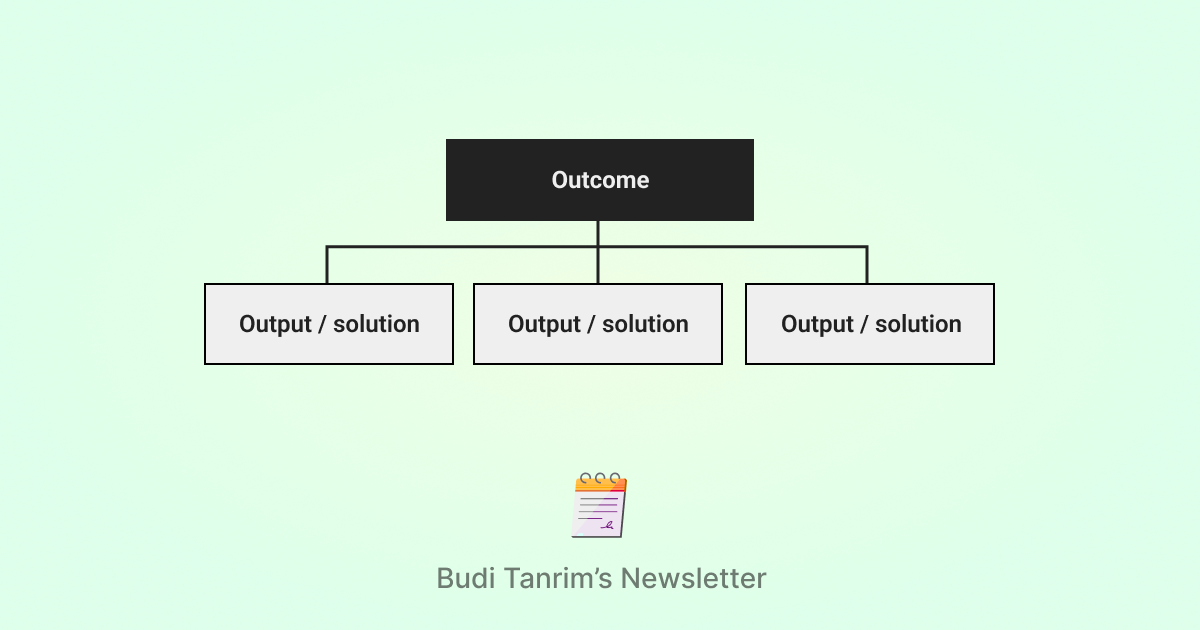Outcomes, not outputs
What would you do if no one uses the solution you thought would work? Then what?
You launched a product and no one uses it. Then what?
This is precisely why need to align on the outcome. It can serve as an anchor for your team. Even if your solution doesn't work, your team can say, "Okay, this solution doesn't work. Let's find another solution that can achieve our desired outcome."
The outcome is like a result. But don’t get confused about output vs. outcome. Here's an example:
Output: food. Outcome: I can please my hunger
Output: pencil. Outcome: I can write a letter
Output: voice chat. Outcome: I can send a message without typing
The bottom line is simple: Once your team is aligned about the outcome, you can experiment with multiple solutions to get there—like a search function or dashboard. Outcomes can serve as an anchor to answer “What’s the result we want?”, if you experiment with a solution and see it doesn’t work, you can change the solution.
This leads to multiple questions: How can we define the outcome? Who should be involved here? What if my boss keeps asking me to work on a specific solution?
In the next post, let’s talk about how you can define the strategic direction. Later this week, I will share an example of how I did it with my team.
Product Discovery Series
Outcomes, not outputs (This post)
Example of strategic direction
You can now browse all the posts grouped by a topic in this Table of Contents. It will be a living document that I continuously update.

